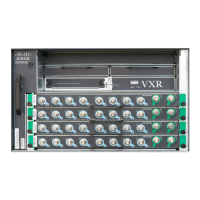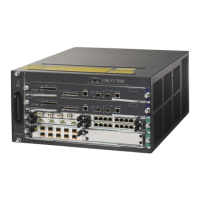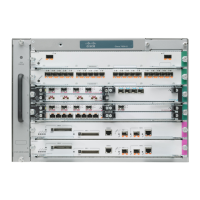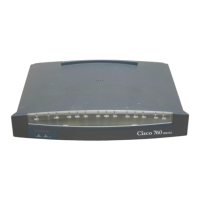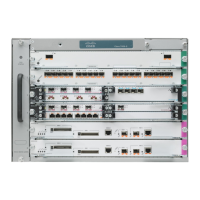Send document comments to nexus7k-docfeedback@cisco.com
7-25
Cisco Nexus 7000 Series NX-OS Interfaces Configuration Guide, Release 5.x
OL-23435-03
Chapter 7 Configuring vPCs
Information About vPCs
------------
(*,G)
oif1 (igmp)
VPC Device2:
------------
(*,G)
oif1 (igmp)
IP PIM PRE-BUILD SPT
When the multicast source is in a Layer 3 cloud (outside the vPC domain), one vPC peer is elected as
the forwarder for the source. This forwarder election is based on the metrics to reach the source. If there
is a tie, the vPC primary is chosen as the forwarder. Only the forwarder has the vPC OIFs in its associated
(S,G) and the nonforwarder (S,G) has 0 OIFs. Therefore, only the forwarder sends PIM (S,G) joins
towards the source, as displayed in the following example:
VPC Device1 (say this is Forwarder for Source 'S'):
------------
(*,G)
oif1 (igmp)
(S,G)
oif1 (mrib)
VPC Device2:
------------
(*,G)
oif1 (igmp)
(S,G)
NULL
In case of a failure (for example, a Layer 3 RPF link on the forwarder becomes inoperational or the
forwarder gets reloaded), if the current nonforwarder ends up becoming the forwarder, it has to start
sending PIM joins for (S,G) toward the source to pull the traffic. Depending upon the number of hops to
reach the source, this operation might take some time (PIM is a hop by hop protocol).
To eliminate this issue and get better convergence, use the ip pim pre-build-spt command. This
command enables PIM send joins even if the multicast route has 0 OIFs. In a vPC device, the
nonforwarder sends PIM (S,G) joins upstream towards the source. The downside is that the link
bandwidth upstream from the nonforwarder gets used for the traffic that is ultimately dropped by it, but
the benefits that result with better convergence far outweigh the link bandwidth usage. Therefore, we
recommend that all vPC customers use this command.
vPC Peer Links and Routing
The First Hop Routing Protocols (FHRP) interoperate with vPCs. The Hot Standby Routing Protocol
(HSRP), Gateway Load Balancing Protocol (GLBP), and Virtual Router Redundancy Protocol (VRRP)
all interoperate with vPCs. We recommend that you dual-attach all Layer 3 devices to both vPC peer
devices.
The primary FHRP device responds to ARP requests, even though the secondary vPC device forwards
the data traffic.
To simplify initial configuration verification and vPC/HSRP troubleshooting, you can configure the
primary vPC peer device with the FHRP active router highest priority.
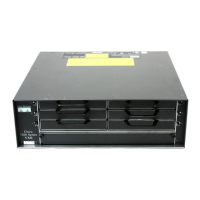
